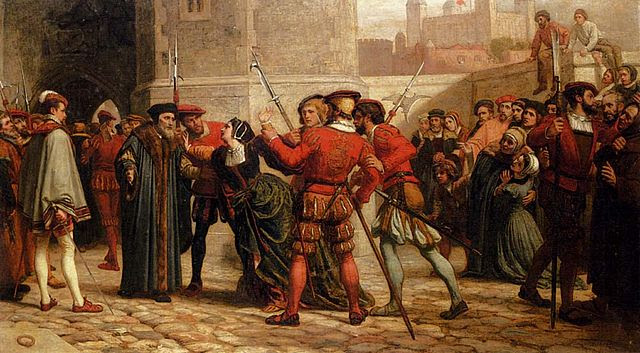by Elijah G., age 17

Margaret More Roper was born in 1505 to Englishman Sir Thomas More. Thomas was Lord High Chancellor and councillor to Henry VII. He believed in education for everyone, even women, which was a radical idea at the time. He eagerly taught Margaret many languages and sciences in her early years. She pursued her studies with zeal, becoming Thomas’s favorite child. In 1521 at the age of sixteen, she was married to William Roper. Margaret was an active writer and translator for many years, although much of her work was lost to sands of time. Her translation of Precatio Dominica, which was written in 1524, was the first English translation published by a non-royal woman.
In 1534 Thomas More was imprisoned because he refused to comply with the Act of Supremacy. Margaret constantly visited her father in his place of confinement; she was his only communication with the outside world. Her privilege to visit her father was suddenly denied by the government, and Thomas was sentenced to death. Margaret was allowed to visit her father one more time. Thomas More, who was decapitated two months after his final visit with Margaret, died with a lasting impression on his daughter’s life.
Thomas Stapleton, a biographer of Thomas More, stated that Mr. More’s head was displayed on the London Bridge. It allegedly remained there until Margaret bribed the executioner and took the head with her. Margaret, who still held dear to her father’s memory, supposedly kept and preserved the head with spices until her death in 1544 at age thirty-nine. Scholars now believe Thomas’s head is buried with Margaret in Canterbury.





Add Comment